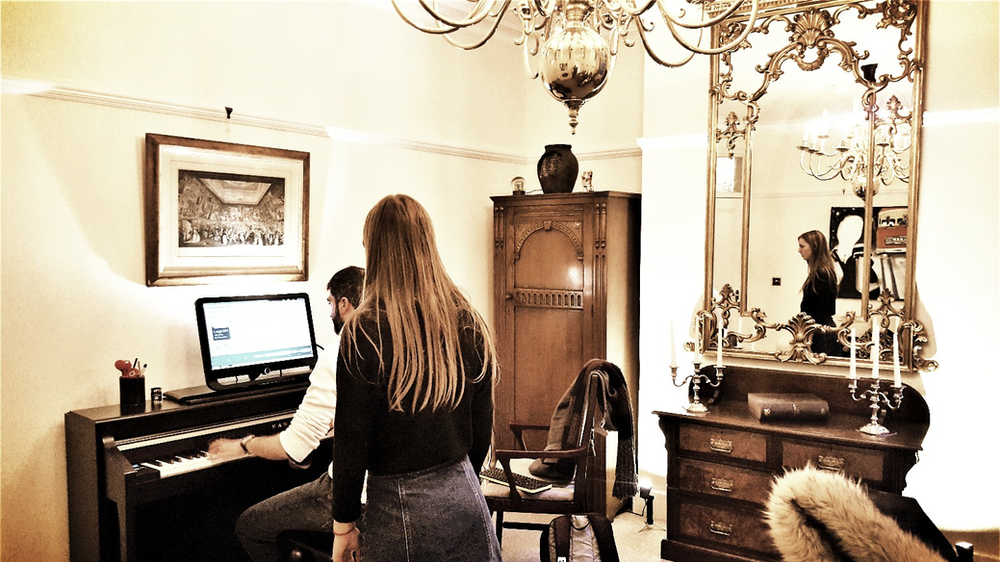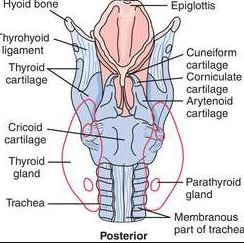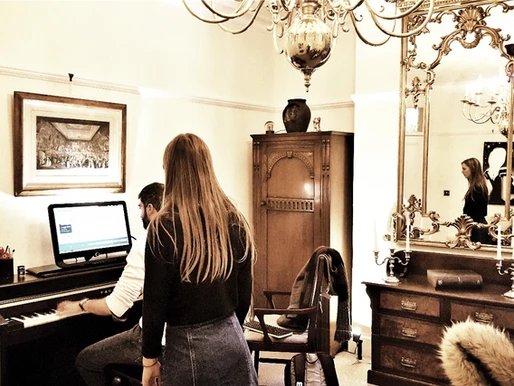Uncategorized
The perception of sound
The perception of sound
One of the biggest challenges any singer must face is how sound is perceived by his/her self, and how it is perceived by the audience. Like all people, I was very shocked to hear what my voice sounded like when played back to me. When I thought it sounded good to me, I realised it was quite the opposite, and on many occasions when I thought it was bad, the recording was actually good. It was difficult to come to terms with what I thought I sounded like and what I did sound like. So how do we know when we are on point and our sound quality is good?

Our Head of Singing, Michael Georgiou teaching one of his students
To start, each singer needs to let go of listening to his/her sound as a means of judging sound quality. As mentioned above, what is usually pleasant to the singer is not so for the audience. When singing, we need to constantly be looking for an open space in the throat and mouth to accommodate vowels and consonants. Also, to allow the sound to live and be vibrant. By doing so the larynx remains down in a comfortable position, giving the singer the impression that the voice is much darker and even lower than what he/she may be used to. We need to keep in mind that singing involves frequent vowel and consonant changes whilst moving through frequent pitch changes all through the range, and so allowing the open space in the throat is crucial if we want to avoid the choking sensation as we go higher.

Our biggest ally when singing is how it feels and not how it sounds. When the air moves freely through and the sound arrives unhindered at an open space in the throat with the soft pallet domed, that is when the voice will be at its best. The sound will be rich rounded and full of life.
Each singer will ultimately understand that whilst singing, sensations felt are more important than sounds heard and that as a performer. How we perceive our sound is not important, but how our audience does is.
Here are some top tips to help with your singing practise:
1. Support
During singing, the waist muscles push outwards whilst the abdomen around the belly button is gradually pulled in. When the muscle contractions stop being sustained, for example, if you cannot pull the abdomen around the belly button inwards any further or push the muscles of the waist outwards any further, then there is usually not as much support as you may think. It is important to conserve your energy so you do not waste it or use it at the wrong time during your song. You do not want to use all your support energy before it is necessary. Save it for when the singing gets difficult, such as on high notes or at the end of a phrase. A tall posture will also help this.
To make sure you are standing in the correct posture you should:
- Stand up and place your feet, so they are evenly spaced on the ground in line with your shoulders.
- Your hips should be even above your feet.
- Your neck should never be tense and you should always keep your eye gaze forwards, not towards the ceiling or down to the ground.
This should all help towards your diaphragmatic breath.
2. Warm-Up
Just like a runner preparing for his race, it is always important to warm up before you start singing to help protect your vocal cords. Scales are always a good way to warm up. Singing up and down each scale will help you reach the higher and lower ends of your capabilities. You can also do this using different words so you are stretching too your mouth muscles, getting them ready for pronunciation. Humming and lip buzzing is also a good way to get your mouth warmed up without causing any strain and allowing your muscles to relax. A lip buzz (or trill) is especially good as it helps to boost the notes that you would otherwise be singing in different registers, for example, falsetto. If you’re having a hard time getting your lips to trill together, a good way to fix this is to repeat “Buh, Buh, Buh” at a quick pace to help draw your lips together.
Then try blowing some air between your lips while doing this so you get the same feeling whilst helping your lips come together.
3. Sing Vowels and Consonants
Learning the art of singing consonants is essential when wanting to improve as a singer.
It is important to separate singing consonants into groups — sibilant, plosive, resonant and ‘coordinated’ consonants, each with their own special approach.
Sibilant — “S” and “T” sounds hold the secret to singing sibilant consonant sounds without the excess need to hold your breath on the consonant instead of exhaling.
Plosives — The secret to P and B sounds in singing plosive words is to hold your breath and allow you to pop lips without causing an unnecessary excess in your airflow.
Resonants — R, L and W involve the replacement of the consonant sound itself with a vowel. For example, often OO is in the manner of “OO-AWE-R” for a word like “WAR” whilst“EE-EH-S” is used instead of “YES”.
Combination/coordinated consonants — This is the rest of your singing consonants that involve a combination of the above approaches to allow you to sing them with resonance and power.
With vowels, it is important to learn how to shape them correctly by using the ‘proper’ tongue shape. This is crucial when mastering the art of singing. It’s a simple and easy concept to get, but unfortunately may not often be taught in most singing lessons. It is important to understand that, the shape of your tongue “EQ’s” your resonance which will give the illusion of a vowel, even if you are not pronouncing it properly:
- AH — Tongue low.
- AA — This is Similar to the AH above, but with the middle of your tongue slightly forwards within your mouth.
- EE — Your tongue should be up at the back but down at the front to create the necessary sound.
- EH/AY — Similar to the above, but with your mouth open and your tongue forward.
Using the tips and tricks mentioned above, you’ll notice that sometimes your sound doesn’t resonate how you would necessarily want it to, or you feel the need to ‘push’. This is because the width of your vocal tract isn’t allowing the correct frequencies to “EQ” your vowel. This is why vowel tuning is so important. A great way to learn this is to gain a wider knowledge around the idea of Vowel Modification, you can try it yourself by singing an AH vowel all the way up the register and just before your voice hits the ‘danger zone’, where you want to change to the falsetto you should allow your throat to change the vowel into an “OH”. This is so you can you feel how the vowel resonates better, without strain.
Learn more about music topics like Etudes.
————————————
The perception of sound
#michaelgeorgiou #singinglessons #singingteachers #musicteachers #musiclessons

